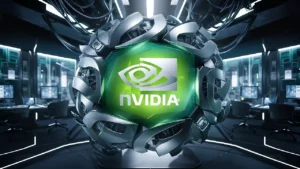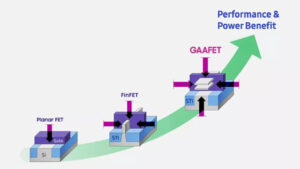Introduction:
In the ever-evolving landscape of artificial intelligence (A.I.), one company stands out as a true pioneer and leader: NVIDIA. However, CEO Jensen Huang’s foresight and strategic decisions a decade ago have positioned the company at the forefront of the A.I. revolution. This blog post delves deeper into the visionary moves made by Jensen Huang and outlines the five major moats that have contributed to NVIDIA’s unrivaled success in the A.I. space.
Follow us on LinkedIn for everything around Semiconductors & AI
Jensen Huang – The Visionary Leader:
Jensen Huang’s leadership at NVIDIA has been marked by his ability to foresee industry trends and position the company accordingly.
Moreover, Huang’s background in electrical engineering, coupled with his deep understanding of computing technology, enabled him to anticipate the impending surge in demand for A.I. processing power.
This foresight led NVIDIA to pivot its focus towards A.I. applications, setting the stage for its dominant position in the market today.
Read More: What are Nvidia’s Top 4 Customers Driving Humongous Revenue Growth – techovedas
Superior GPU Design – The Powerhouse of A.I. Processing:
NVIDIA’s Graphics Processing Units (GPUs) have emerged as the cornerstone of modern A.I. computing.
Unlike traditional Central Processing Units (CPUs), GPUs excel at parallel processing, making them ideally suited for the massive computational tasks inherent in A.I. algorithms.
However, NVidia’s commitment to pushing the boundaries of GPU design has resulted in a series of innovations, such as the Turing and Ampere architectures, which deliver unprecedented levels of performance and efficiency for A.I. workloads.
Chip-to-Chip, Server-to-Server, Rack-to-Rack Networking:
The seamless connectivity between NVIDIA’s chips, servers, and racks forms a critical component of its A.I. infrastructure.
Moreover, NVidia’s networking technologies, such as NVLink and Mellanox, enable high-speed data transfer and low-latency communication between devices, minimizing bottlenecks and maximizing throughput in A.I. workflows.
This interconnected ecosystem ensures that data can flow seamlessly across the entire computing infrastructure, from individual GPUs to large-scale data centers.
CUDA & Software Libraries – Empowering A.I. Development:
NVIDIA’s Compute Unified Device Architecture (CUDA) has become the de facto standard for programming GPUs for A.I. and scientific computing.
Moreover, CUDA provides developers with a powerful and flexible platform for harnessing the parallel processing capabilities of NVIDIA GPUs, allowing them to accelerate their A.I. algorithms and achieve breakthrough performance.
In addition to CUDA, NVIDIA offers a comprehensive suite of software libraries, including cuDNN, cuBLAS, and TensorRT, which provide optimized implementations of popular A.I. algorithms and enable developers to quickly deploy their models in production environments.
4 Million+ Developers – A Growing A.I. Community:
NVIDIA has cultivated a thriving community of over 4 million developers who are actively engaged in building A.I. applications and solutions.
Through initiatives such as the NVIDIA Developer Program and the NVIDIA Deep Learning Institute (DLI), the company provides developers with access to resources, training, and support to accelerate their A.I. projects.
The vibrant developer ecosystem not only fuels innovation but also ensures that NVIDIA continually refines and improves its A.I. technologies based on real-world feedback and use cases.
Conclusion:
NVIDIA’s ascent to prominence in the A.I. space is the result of a decade-long strategic bet on the future of computing.
Under Jensen Huang’s leadership, the company has leveraged its expertise in GPU design, networking, and software development to build a formidable ecosystem that powers the world’s most advanced A.I. applications.
As the A.I. revolution continues to unfold, NVIDIA’s strategic moats position it as a driving force shaping the future of artificial intelligence, ensuring that it remains at the forefront of innovation for years to come.







